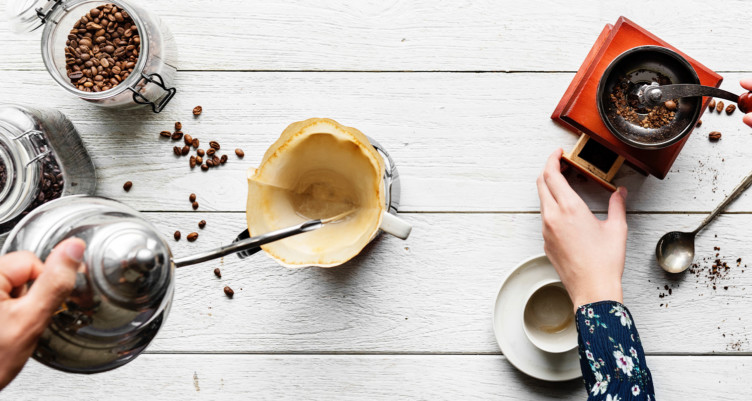The Ultimate Contrast of Popular Coffee Brewing Methods for Home Baristas
The Ultimate Contrast of Popular Coffee Brewing Methods for Home Baristas
Blog Article
Checking Out the Art of Coffee Brewing: A Comprehensive Overview to Refining Your Mug
The art of coffee brewing is a complex self-control that combines scientific research with personal expression, where the option of beans, water top quality, and developing approaches merge to produce a polished sensory experience. Understanding the nuances of various coffee beans, specifically the distinctions between Arabica and Robusta, is vital for any type of connoisseur.
Recognizing Coffee Beans
To really value the art of coffee developing, one should initially understand the foundational component: coffee beans. Coffee beans mainly fall into two categories: Arabica and Robusta.

In addition, the handling approach-- whether cleaned, all-natural, or honey-- influences the beans' last taste. Comprehending these components permits makers to select the best beans that align with their favored flavor profile, eventually improving the coffee brewing experience. coffee brewing methods. This understanding is important for any individual desiring grasp the craft of making the ideal cup of coffee
Brewing Techniques Described
Lots of lovers discover that the selection of brewing technique considerably affects the final flavor and scent of their coffee. Each technique utilizes different removal techniques, affecting the coffee's character and richness.
Drip brewing, one of one of the most preferred approaches, utilizes a maker to trickle warm water via ground coffee, creating a constant and tidy cup. French press, on the various other hand, immerses coffee grounds in warm water, allowing for a fuller body and even more durable taste, as oils and fine bits remain in the mixture.
Pour-over brewing uses a careful approach, where water is manually put over coffee premises, enabling specific control over extraction time and temperature, causing a intense and nuanced mug.
Coffee, a concentrated coffee made under stress, is known for its solid flavor and creamy structure, working as the base for various coffee drinks, including lattes and coffees.
Essential Equipment Needed
The structure of any kind of effective coffee developing process exists in top quality devices tailored to your favored approach. A reliable coffee grinder is critical; freshly ground beans dramatically enhance flavor and aroma.
Following, consider your brewing tool. Alternatives vary from drip coffee makers and pour-over configurations to French presses and coffee machines. Each technique provides unique flavor profiles and developing techniques, so choose one that lines up with your taste choices.
An exact scale is likewise very useful, allowing you to measure coffee and water precisely, which is crucial for uniformity. Furthermore, a thermometer can help keep an eye on water temperature level, as it straight influences removal quality.
Mastering Water High Quality
The quality of water used in brewing coffee plays a significant function in identifying the final taste account of the mug. Different variables add to water top quality, consisting of mineral material, pH degree, and overall pureness. Preferably, water should be without pollutants and impurities, as these can negatively impact go to my site the preference of coffee.
Minerals, such as calcium and magnesium, enhance the removal of tastes from the coffee premises, while preserving a balanced pH degree-- around 6.5 to 7.5-- is necessary for optimal removal. Water that is too soft may lead to under-extraction, resulting in weak or sour tastes, while excessively difficult water can produce a bitter or extreme cup.
For the finest results, filtered water is suggested, as it reduces the visibility of chlorine and various other unwanted substances typically found in tap water. In addition, think about using water with an Overall Dissolved Solids (TDS) degree in between 150-200 ppm, which is generally perfect for coffee developing. By grasping water quality, you can lay a strong structure for achieving a constantly exceptional cup of coffee, allowing the one-of-a-kind characteristics of your picked beans to radiate through.

Tips for Taste Improvement
Enhancing the flavor of your coffee can considerably boost your brewing experience and highlight the unique subtleties of your selected beans. To achieve try this website this, take into consideration numerous key aspects that influence taste.
First of all, the work dimension plays a vital role. A finer work enhances removal, causing bolder flavors, while a coarser grind returns a milder mug. coffee brewing methods. Readjust your work according to your brewing technique to achieve optimum results
Second of all, experiment with brew time. Over-extraction can cause anger, while under-extraction results in a sour taste. Objective for a mixture time that balances these extremes, typically between two to 4 minutes, relying on your approach.
Brewing with water that is as well warm can swelter the coffee, while water that is as well great might stop working to extract adequate taste. In verdict, the art of coffee brewing is a diverse method that calls for a deep understanding of numerous aspects, consisting of bean option, brewing techniques, and water high quality. By integrating these components, coffee fanatics can raise their developing techniques, resulting in a mug that not only satisfies personal preferences yet likewise showcases the abundant intricacy of coffee tastes.
The art of coffee developing is a diverse self-control that combines scientific research with personal expression, where the choice of beans, water top quality, and developing approaches merge to produce a look at this now refined sensory experience.To really appreciate the art of coffee developing, one have to first recognize the foundational component: coffee beans. Developing with water that is too warm can blister the coffee, while water that is as well amazing may fail to extract adequate flavor. In conclusion, the art of coffee developing is a complex practice that requires a deep understanding of numerous elements, including bean option, developing approaches, and water high quality. By incorporating these elements, coffee fanatics can raise their developing strategies, resulting in a mug that not only pleases individual choices however also showcases the rich intricacy of coffee flavors.
Report this page